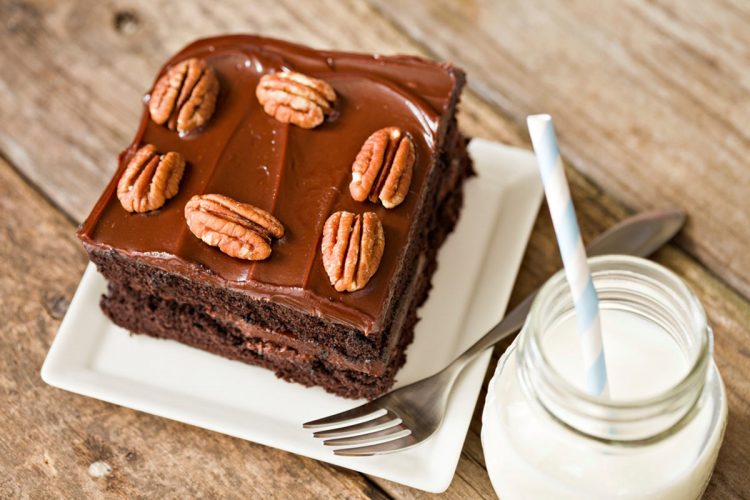“Nostalgia — it’s delicate, but potent. A twinge in your heart far more powerful than memory alone.”
With just a few words, Don Draper, the advertising genius on “Mad Men,” sums up nostalgia’s awesome ability to tell a compelling story, stir consumers’ emotions — and open up their wallets.
It works on TV. And as real-world bakeries large and small know, it also helps sell pies, cakes, cookies and other baked goods.
“Consumers are drawn to foods that play off feelings of nostalgia and allow them to recreate fond memories,” says Ashley Robertson, Corbion’s market manager, bakery. “With today’s increasingly busy lifestyles, consumers often find comfort in indulging in baked goods that allow them to slow down, reminisce and simply enjoy something delicious.”
A recent report from market trends analyst Mintel details how alluring and profitable it can be to draw on the good ol’ days.
“Brands that have traditionally assumed kids were their primary market may want to consider grown-ups too, especially if those brands have a storied past – by getting a nod to their childhoods, consumers can experience that element of play,” according to Mintel. “While (the trend) looks at the opportunity to bring back actual brands from our childhood, there’s also an opportunity to bring back the eating experience of our childhood.”
Adult lives are busier and more stressful than ever, as the report points out. When people finally find the time to take a break from being a grown-up, they want it to count. Sometimes that can mean a return to childhood, and food marketers are getting the message. “We’ve recently seen a number of products and promotions centered on childlike indulgences,” according to Mintel.
When it comes to baked goods, nostalgia can take many forms. For many, it’s a certain flavor associated with the past: red velvet, butterscotch, lemon. Oftentimes, premium ingredients like pure vanilla, deluxe chocolate and real cane sugar also can help entice consumers to treat themselves to these otherwise “guilty” pleasures, says Robertson.
Certain baked goods categories also help consumers feel the tug of nostalgia more than others, Robertson says. “Cake, cookie and pastry manufacturers have recently capitalized on the growing trend for nostalgic items, as consumers increasingly demand sweet baked goods that remind them of the simplicity of made-from-scratch applications.”
Nostalgia can be tied to a particular treat: think of all the reimagined retail bakery versions of s’mores, Oreos, Nutter Butters or apple cider donuts. Done right, one bite can bring the past alive again for nostalgic consumers.
For some businesses, nostalgia is part of their very DNA — take New York’s Doughnut Plant, where owner Mark Israel relies on the same recipes used by his late grandfather, also a baker. Or Brooklyn-based POP Cake Shop, whose cake push pops are a modern twist on the ice cream push pops introduced a generation ago.
Nostalgia doesn’t mean an exact replica of the past. Today’s bakers combine a love of the past with very modern-day techniques, like sourcing the freshest ingredients they can, and using only the highest-quality ingredients.
Nostalgia varies by generation. Take the craze for gourmet Pop-Tarts, which taps into boomer and Gen X longing for the famous breakfast treat introduced in the mid-60s. Comfort foods and nostalgic baked goods are especially popular with millennial consumers and older generations who seek to recreate similar memories with their families, Robertson says. “Even if a consumer has never lived through the timeframes associated with these nostalgic items, he or she can still find comfort in consuming baked goods made with real, wholesome ingredients.”
Consumers have certain expectations when it comes to indulging in nostalgic baked goods and comfort foods, Robertson says. In order for these applications to tbe as good as they remember them, consumers expect reliable quality and consistency as well as enjoyable taste and texture.
Consumers also want to know what’s in their baked goods, Robertson says. “Simple ingredients help remind them of the familiarity and comfort of made-from-scratch products. To help manufacturers deliver on these demands, we continually develop and test the most innovative solutions and work with our customers to create the desired taste, texture, quality and crumb structure consumers expect.”
Corbion’s Pristine® line of cake mixes, bases and icing stabilizers, for instance, enable bakers to reduce keystrokes in ingredient labels by up to 42 percent without compromising taste or texture. These clean-label solutions allow bakery manufacturers to meet growing demands for simplified ingredients without sacrificing quality, which in turn helps remind consumers of the fond memories associated with simplified or “scratch” ingredients.
For dessert lovers, Corbion’s SweetProTM emulsifier solutions allow bakery manufacturers to deliver the taste, texture and quality consumers expect from these products. Similarly, the company’s Deluxe Cakes are specially designed to help bakery manufacturers create indulgent, moist and versatile cakes, cupcakes and muffins.
“These rich and decadent applications can provide a certain level of comfort and nostalgic sweetness for consumers in search of a well-deserved treat,” Robertson says.
To ensure the highest degree of success, our application and technical service teams work directly with bakery manufacturers to identify and implement the most fitting solutions based on each customer’s specific needs.
Using the latest technologies and techniques, Corbion helps its customers bring the past alive.


